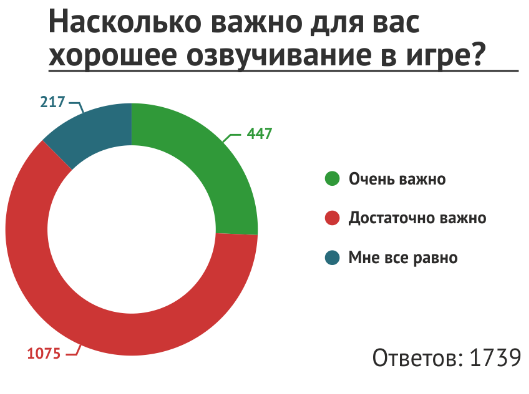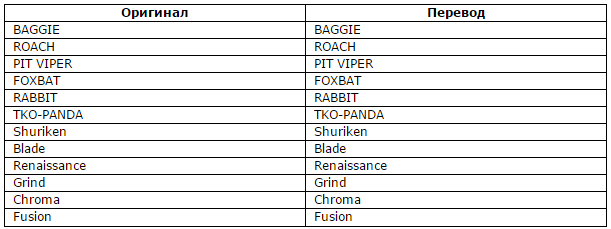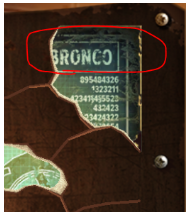Localization of the game: a look from the translator
What is a good localization of the game, why do translators need a guideline and what things can be left in the original language – in your diary on App2Top.ru told the company All Correct Games.

Probably, it’s no secret to anyone that before starting work on a new project, it is necessary to register together with the client the requirements for the translated text in the terms of reference. It may sound boring, but even game texts go through this procedure, without which it is impossible to ensure high quality localization.
At this stage, we will learn about the translation language (for example, Mexican or European version of Spanish), about which punctuation marks and symbols are supported in the game: herringbone quotes or straight ones; dash (en dash or em dash) or hyphen, about addressing the player (to “you” or to “you”), and much more.
But if everything is extremely clear in these points (they just need to be followed), then there are moments that can cause doubts and questions: whether to translate the names of locations, what to do with texts on graphic elements, transliterate or translate completely different realities encountered in the game, how to deal with wordplay, and so on.
We decided to create a document in which we spelled out all the controversial points that arise in the translation process between the developer and the localizer, where we also gave arguments and illustrative examples that would allow us to talk about any changes in the text in detail.
Usually such documents are compiled and provided by developers for localizers, but we, frankly, went the other way. We gathered all our desire to build mutual understanding with customers and directed it in the right direction. That’s how our first collection of recommendations, the General Localization Guideline, appeared, on which our team worked hard for about a year. In the future, we plan to implement it on all our gaming projects for various companies.
What is this document?
This document was created for a specific customer and specifically for his projects. This decision was not made by chance. Firstly, it was the projects of this customer that led us to the idea that it would be good to open the curtain a little and share with foreign developers the features of Russian localization, and secondly, considering specific projects that have their own characteristics and requirements, it is always easier to solve emerging issues and tasks.
So, we have highlighted the following “acute”, in our opinion, moments:
- completeness of localization (translation of proper names, names of interface elements, translation of game terms, transfer of wordplay, connection of completeness of localization with voicing);
- the influence of untranslated and transliterated words on the understanding of the text;
- the level of English language proficiency in Russia;
- technical specifications for localization of the project and uniformity of the translated text;
- translation of existing realities;
- translation of texts on the graphic elements of the game.
It can be seen from the above points that we have tried to consider the topic of localization completeness from all possible sides, explore issues related to other stages of localization and even reflect the peculiarities of the Russian gaming community.
So, if we talk about a document that briefly outlines the rules and guidelines that specialists in various fields should follow in their work, then we probably went a little further and created a serious turnkey document. Let’s look at some points from this document.
Completeness of localization
We tried to reinforce each point with the rules and standards described in authoritative reference books for translators. So, for example, we used the following sources:
- IGDA. Best Practices for Game Localization
- Milchin A. E., Cheltsova I. K. Publisher’s and author’s Handbook. Editorial and publishing design of the publication. Moscow: 2014
- GOST 7.36-2006. Unpublished translation. General requirements and rules of registration
- Heather Maxwell Chandler. The Game Localization Handbook. Hingham, 2005
In these sources, we found confirmation that names and surnames must necessarily be transcribed either “taking into account the current situation in the language and ist. the literature of tradition”, or approximated to a foreign sound.

Geographical names should also remain in the target language, if there are such points on the map.

The same is the case with “talking” names and nicknames: they must be translated, or at least transliterated:

It’s no secret that the interface of the game and game terms are also of great importance, so buttons, signage, window names, names of tracks for racing — everything must necessarily be in the language of translation, otherwise the impression of the game may be spoiled.

Wordplay and various references to works of art are a real creative challenge for the localizer, and this is a real achievement when it turns out to convey such moments in the game in the translation language. Therefore, when we see the requirement to leave everything in English (which is not so common, but still), we, frankly, get upset. In our experience, and according to the feedback of the players, such moments must be translated and transmitted. Here are some answers from players to the question of what is a good localization:
- “The wordplay has been adapted into Russian, as well as various well-established expressions.”
- “Well-chosen voices for the characters, emotional coloring and wordplay to the place.”
- “When translators are “in the subject”, translation, wordplay, cultural references to something (if they are present in games) are adequately transmitted and adapted for the Russian-speaking player. In voicing, first of all, intonation.”
- “A well-translated wordplay or idiom with the preservation of meaning.”
English language proficiency level
Another reason why we insist on full localization of games and talk about it in a separate paragraph in the document is the level of English language proficiency in Russia. We have already cited the statistics of our survey “What is good localization?” among the players (link), where they said that most of the audience assesses their level of English as “below average”.

The same data is provided to us by one of the largest ratings in the world, EF EPI, which annually collects and publishes research on the knowledge of English among citizens of various countries. Russia is on the 36th place among the assessed countries, of which there are 63 in total, and has an index of 50.43, which by the standards of this methodology is estimated as a low level. In general, this level allows the player to understand simple phrases and names in the game, but it can prevent him from catching the wordplay and understanding some complex constructions and references.
And the players themselves write about the influence of untranslated text on understanding and passing the game. What do they usually attribute to signs of poor localization?
- “Spelling and punctuation errors, loss (or replacement) meaning in translation, cut parts of the text, untranslated text and DLC.”
- “Monotonous reading of the text, strong distortion of phrases, untranslated pieces of text, dialogues of dubious quality.”
- “The monotony and expressionlessness of the actors’ voices. Untranslated text. Poor literary style.”
Connection with voice acting
Voice acting is another quite obvious reason to translate everything. Players, having heard the replicas, in which the Russian text and untranslated names of locations and achievements alternate, will at best change the voice language. There is a relationship between translation and the game’s voice, and such a variant of voice-over can interfere with the player, not to mention that he is unlikely to understand anything from the mixing of English-Russian phrases. But we also found out at the time that voice acting plays a very important role, and for most players it is a decisive factor when choosing a game.

Translation of realities
The next interesting point that we have highlighted is the translation of existing realities. What about car brands, aircraft models, names of institutions and many other similar names found in games? This point is perhaps the only one that stands out from the general concept of the document, because in the case of foreign brands in some cases (car brands, musical works) it is allowed to leave such terms without translation.
So, for example, the names of motorcycles in games can remain in the original language:

However, as for the Russian realities, they must be left in their native language, which is logical, because these realities appeared in Russia:

As a recommendation to this point, we suggested compiling a complete glossary before the start of localization (or during the translation of the first texts) in order to prescribe and discuss such points with developers and involve experts in the discussion, if necessary.
Translation of graphic elements
Another difficulty lies in the translation of graphic elements. The fact is that often at the development stage, various images containing textual information (for example, maps) are created in a non-editable format, and it is not possible to localize the text. There is still the option of redrawing, but if this stage is not planned in advance, it can be difficult to squeeze this task into the process.

Thus, the only recommendation that we brought out for the customer at this point was planning such moments at the early stages of development (creating editable graphic elements or planning redrawing with its inclusion in the game budget).
Conclusion
Someone thinks that creating such documents in order to convey to the customer the features of Russian localization is a waste of time. We see this as a huge potential and an opportunity to build the right relationship between the localizer and the developer during the creation of a new game.
As a result, we got a detailed document in which we covered a wide range of issues related to the completeness of the localization of games. Of course, for the customer, we also gave many examples from specific projects that we worked on, so that the document did not turn into another theoretical manual. Fortunately, we were heard by the developers of the company for which the document was created.